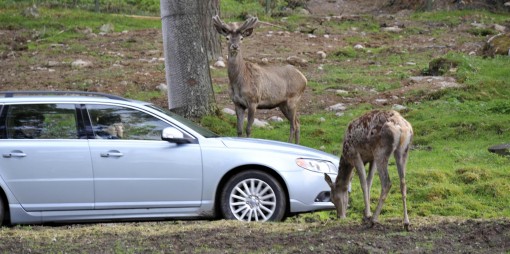Volvo goes on safari to help cars avoid animals
VOLVO is developing a system which will alert drivers and automatically apply the vehicle’s brakes if there is an animal in the road.
Expected to be launched in a few years’ time, it uses the same technology as the Pedestrian Detection with Full Auto Brake which is available on S60, V60, XC60, V70, XC70 and S80.
The project to develop a safety system that reduces the risk of collisions with wild animals is part of Volvo Car Corporation’s vision for 2020 – that nobody shall be seriously injured or killed in a new Volvo.
Andreas Eidehall, technical expert in the field of active safety systems at Volvo said: “The system consists of two parts – a radar sensor and an infra-red camera that can register the traffic situation. As most collisions with wild animals take place at dawn, at dusk and during the dark winter months, it is essential for the system to also function in these conditions. The camera monitors the road ahead and if an animal is within range the system alerts the driver with an audible signal. If the driver does not react, the brakes are automatically applied.”
“The goal is for the system to operate at the normal country speeds on country roads. In cases in which it cannot help the driver entirely avoid the collision, the system will slow down the car sufficiently to help reduce the force of impact and thus of serious injuries.”
One challenge facing the engineers is to teach the system to recognise different animals. A development team from Volvo spent an evening at a safari park digitally logging film sequences and behavioural patterns of animals, such as moose and deer. By driving very slowly along a trail where fodder had been laid out to attract the animals, data was recorded and this will later be used to evaluate and develop the sensor system.
In the first stage, the system will respond to large animals that risk injuring the driver or passengers in an impact, such as horses and deer.
In Sweden alone, more than 40,000 accidents involving wild animals are reported every year.
“In an impact with a large animal there is a relatively high risk of personal injury since it is common for the animal to end up on or roll across the front of the car and its windscreen,” Andreas Eidehall explained.
The project has been under way for just over a year and a lot of work still remains to be done. Various technologies are currently being evaluated, software is being developed and while the system “learns” to recognise various animals, development is also under way on the necessary decision-making mechanisms the system must respond to.

